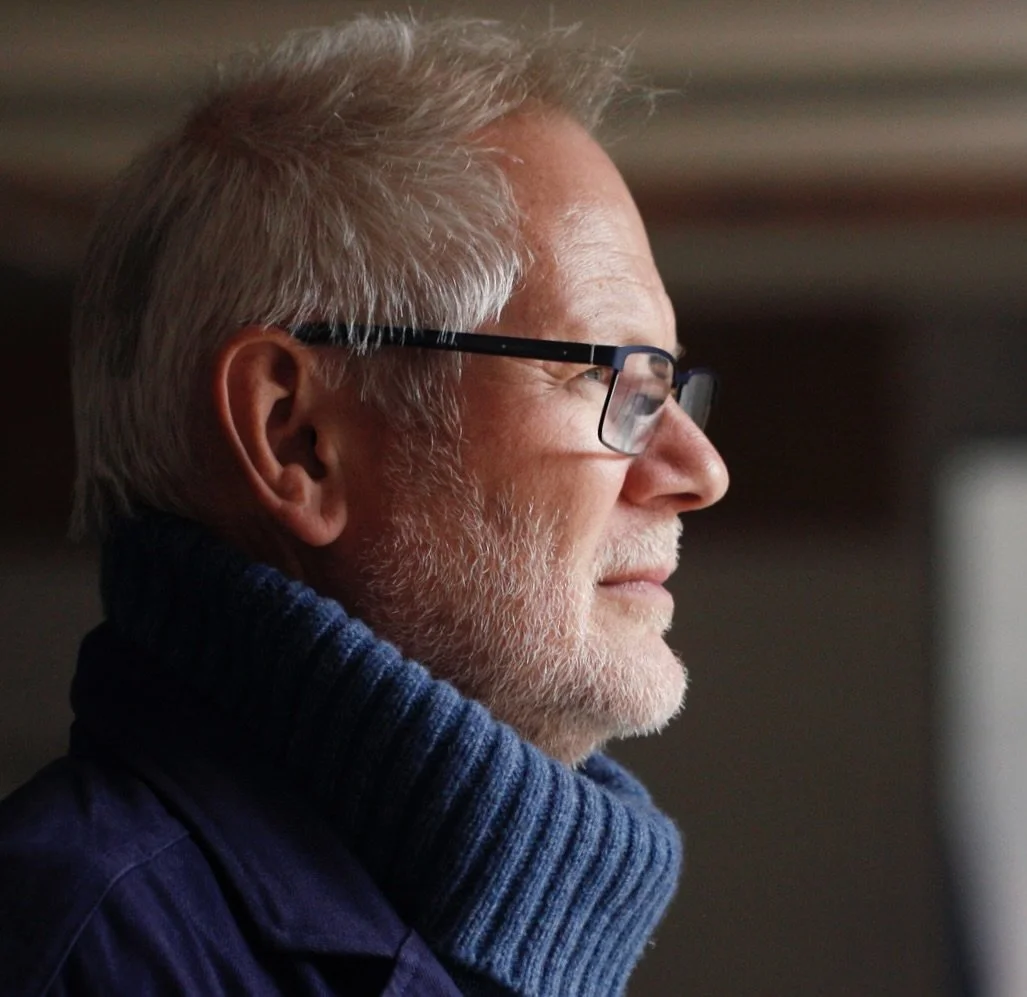About
Simon Middleton is a British-Irish artist whose multidisciplinary creative career spans decades and a wide range of media. From an early age, Simon was immersed in artistic expression; writing and illustrating book-length stories as a child, later studying Combined Arts and Education at the University of East Anglia, and publishing poetry and short fiction in his twenties.
His professional journey has blended artistic exploration with entrepreneurial ventures. Alongside a successful career as a copywriter and creative director as well as work in musical instrument and clothing manufacturing, Simon spent over 30 years as a songwriter, vocalist, and performer in a series of independent folk and rock bands.
In the 2010s, Simon turned his attention to textile arts, spending several years weaving artisan scarves, throws, and blankets. These explorations in texture and abstraction laid the groundwork for his current visual art practice.
Today, Simon is focused on painting and drawing, working primarily in oils and wax oil pastels. His style, which he describes as ‘emotional impressionism’, evokes mood, memory, and the inner landscape, through bold colour and instinctive form. His work often straddles the line between abstraction and symbolism, drawing loosely from myth, nature, and ritual.
Simon has four adult children, two grandchildren, and lives in Norwich with his wife Maryanne, a textile artist and gardener.
Artist photograph by Richard Ecclestone.
Artist’s statement
I often think of myself as an emotional impressionist: not attempting to depict the world, but to express glimpses of an internal landscape (albeit one that inevitably reflects the external). My work is rarely about making a picture of something; rather, I aim to make a thing which is itself. It is up to the viewer to decide how to engage with it, to interpret or inhabit it as they choose.
Sometimes the work might appear to be representational to some degree, of a landscape perhaps, or of an animal form. But this is most often coincidental, reflective of our innate desire to see meaning, as when we try to interpret clouds. That’s not to say that I don’t throw in an archetype now and then (angels, dragons, fish, flags being a few examples).
My work is closer in spirit to cave painting or aboriginal traditions than to the Western classical canon. There are echoes of abstract expressionism in my approach, yet I am also drawn to meaning beneath the surface: myth, mysticism, and symbolism. If I had to align myself with a lineage, my heart is closer to Cy Twombly and Joan Mitchell than to Pollock or Rothko, for example.
I work in two distinct modes. On canvas, I paint with oils using a palette knife, rarely with a brush. My process is physical, instinctive, and rooted in direct engagement with colour and texture. Colours are usually mixed on the canvas itself in a vigorous, tactile flow. On paper, I use Caran D’Ache NeoArt 6901 wax oil pastels; unique materials that recall the immediacy of children’s crayons. These drawings often involve multiple layers, built up and then scored, scraped, or polished with oil to soften and unify the surface.
What I strive for in all my work is a sense of timelessness, something that feels discovered rather than made. I want the work to evoke a feeling that it might have always existed, as if the images were artefacts unearthed from some deep cultural memory.

